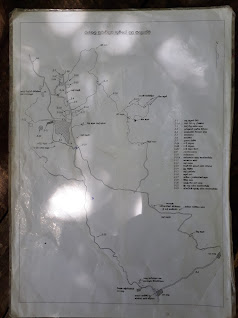Rajagala (The Monarch's Rock), commonly Rassaagala or Rajagalathenna, is a rugged and heavily forested mountain situated 1,038 feet (316 m) above sea level, in a sparsely populated part of Eastern Province, Sri Lanka which has an important archaeological value. The Rajagala archaeological site is only second to the Mihintale monastery in Anuradhapura and it spreads over 1,600 acres (650 ha; 2.5 sq mi). It consists more than 600 prehistoric ruins, monuments and artifacts, and nearly 100 of them are ancient stupas.
Access to the mountain from Ampara Town is about 24 kilometres (15 mi) north of Ampara - Maha Oya Road(A27), via Uhana and the village of Bakkiella.
Earlier this site was not subject to any archaeological research. After four years of recent excavation, Department of Archaeology developed Rajagala archaeological site as the new Archaeological Training Center with the participation of India's Deccan University.
The history of the place is not definite, but Bhikkhus are believed to have inhabited it before the 1st century BCE. Stone inscriptions of the period have been found at the site. All over the northern summit of the mountain, extensive ruins have been excavated from the jungle, and some are only partially excavated. However, Its history goes back to the early days of Buddhism and an inscription tells that the Arahath Mahinda Thero, who brought the Buddhism to Sri Lanka, had visited the Rajagalathenna Temple. There are only two rock inscriptions referring to the Arahath Mahinda Thero; one of the inscriptions found in this site and the other is in Mihintale.[6] It is believed that ashes of the Arahath Mahinda Thero and his disciple "Itthiya Thera"(latter name being given as Idika)[5] were enshrined in a stupa here. A stone inscription found nearby bears evidence to this fact, although no excavation or restoration work has been carried out at this site to confirm what's inscribed in the stone inscription.
Name "Rassagala"
Archaeologist stated, the people of the Raksha tribe had lived in the area. They were human beings who worshiped the Rakshasas. The Sanskrit word raksha means devils and demons, in Sinhala ‘Rassayo’ or ‘Rakshayo’, the word raksha have become Rassa over the years and since then this mountain is called Rassa-gala(The devils/demons's mountain).































